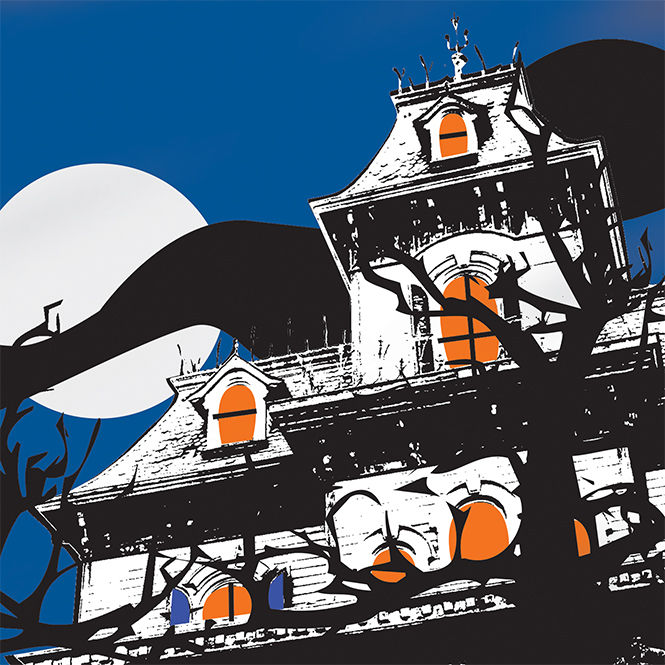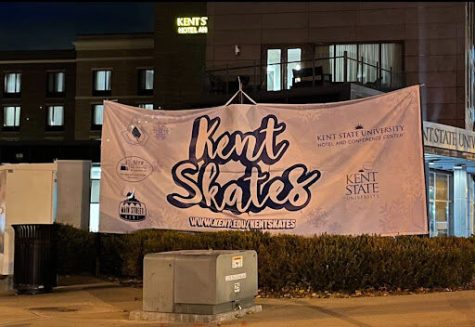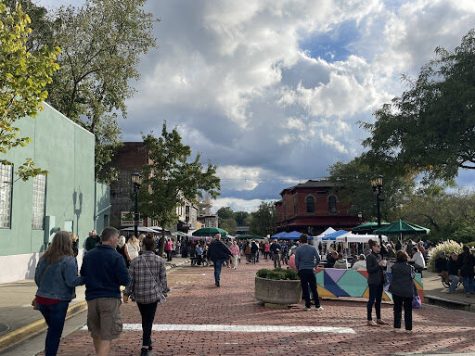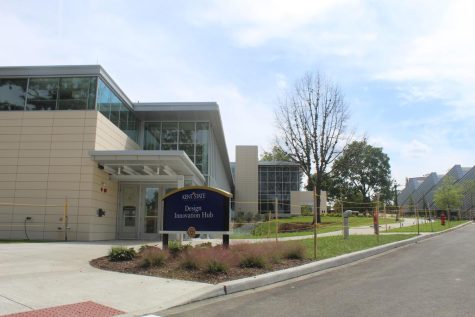The spirits and frights of Kent
August 11, 2017
Throughout the summer, and the school year, the sound of construction in Kent is often little more than white noise — part of the regular thrum of the city’s soundscape.
The new sections of downtown and the bright daylight on campus can make the whole atmosphere feel brand new, so much so that it can be easy to forget Kent has a past.
And its own ghosts.
“Yeah, I think that Downtown Kent, really on both sides of the river, and a wide area are pretty much — many places that are haunted there,” said Richele Charlton.
Charlton works as the assistant director at the Kent Stage, one of the city’s more infamous areas for otherworldly happenings.
“So you have, like, different tribes converging, and then you have settlers coming in, and all the things that happen in one’s lifetime, life stuff, you know. Sadness, happiness,” she said. “There were times when the downtown had big fires in it, and people died and buildings were burned down, and then it was rebuilt or whatever, so lots of things that happened, and I’m sure that all that accumulates into, you know, kind of an energy.”
Charlton organizes the ghost walks in Kent every year: events where groups of people traverse Downtown Kent in search of ghost stories from local residents and shop owners. One such participant, in previous years, was Jason Noble, who rented the space above the Pufferbelly for five years.
Noble said although he works late hours, he has never felt scared in the space, even though he has experienced lights switching on and off and the sighting of a spirit dressed in Victorian garb staring out of the windows.
“So one day, I’m going and I’m doing a photoshoot, and it’s a mother and daughter who I’ve been photographing every year for like ten years at that point,” Noble recalled. “And we’re across, taking pictures down on the river, and the mother asks me, she’s like, ‘I thought you left the doors locked, did you open up the shop…is anybody up there?’ And I’m like, no, the doors are locked why?’ She’s like, ‘I just saw a woman looking out the window.”’
Noble recalled that the mother told him the woman was dressed in “an old gown,” perhaps waiting for something never to come, as the old Pufferbelly building was also the old train station- and part of the underground railroad in Kent.
Later, after allowing paranormal investigators to go through his space, Noble was confronted with an image: that of two transparent figures in the hallway — one seemingly part of a Victorian dress.
“So, being a photographer, once I got this photo, like, I blew it up in Photoshop, increased the contrast, you know, did everything I could to it. And it’s like, ‘Okay, there’s something in this photo. It’s not just an anomaly,’” Noble said.
Another stop along the ghost walk’s route in previous years has been Empire, a store specializing in mystical gifts.
“ … It is believed that there are at least two spirits at Empire. Charlie’s this kind of a caretaker kind of a spirit and a little girl named Alice,” said shop supervisor Alex Limbach, who has been with Empire for four years.
According to Limbach, the building that houses Empire is fairly old — and part of its structure may include pieces left behind from a blaze that once raged through the city.
“Yeah, Alice, she’s just kind of little and estimated around probably five or seven — Tricksy … mischief causing, occasionally likes to knock things over,” Limbach said. “ But you know, generally, not harmful or anything like that, just kind of mischievous.”
The Kent Stage itself, of course, as the birthplace of Kent’s ghost walks, has a few spirits of its own.
“Sometimes it is hearing — like sometimes you very clearly, if you are the only one in the entire theatre, and you’re doing something quiet, and very heavy footsteps go across the theatre stage, it’s pretty evident that you’re pretty… not alone,” Charlton said.
Though actual physical manifestations are rare, Charlton said — and bursts of energy or cold spots in spaces where the spirits usually “hang out” are far more common — Charlton, along with other witnesses, have experienced the exceptions to the rule.
“I’ve seen different apparitions, I would say the one that’s most often seen, and not just by me, but by like, probably … hundreds of people is a shadow man that we have, and he’s usually on — like, if you’re sitting in the audience and you’re facing the stage, he would be, like on the bottom lefthand corner, near that corner of the stage,” Charlton said.
Other ghosts include a female named Josephine, believed to have lived in the apartments above the stage — though she usually haunts the theatre dressing rooms.
“At one time, we had two young ladies that were grad students at Kent State that were living up there, and I’m not kidding — probably every other day they were downstairs saying, ‘Holy cow this happened.’ It was like never ending,” Charlton said. “I mean some of it was pretty amazing, and those are probably the things that stick in your head, like … in their bathroom they had like a shelf with like some nail polish and makeup on there, and there would be times when they would hear something, and they’d go in, and like the nailpolish would be moving around on the shelf.”
Across the street, the Franklin Hotel Bar — formerly just the Franklin Hotel — hosts its own gruesome stories. A faulty elevator killed two men, Charlton said, crushing one’s head in its faulty machinery.
With the city of Kent’s official naming dating back to 1864, the clusters of ghostly activity can seem plausible. The buildings are older, and, Richele said the energy of the flowing waters of the Cuyahoga River that cuts through the city help them to manifest.
This doesn’t, however, mean that campus itself is free from its own myths.
Even residence halls have managed to scare those who lived there, including former resident assistant Krittika Chatterjee, who recalled staying in Fletcher one night after other students had left.
“I had music going, and I was on the phone with my friend while I was packing my suitcases and clearing out my room, and then at one point, over the music and over my conversation with my friend on the phone, I heard footsteps outside in the hallway outside of my room,” Chatterjee said.
Soon, those footsteps progressed to lights switching on and off in the laundry room, loud stomping and a terrifying night.
“I was terrified. I locked my door, I turned off all my lights, I turned off my music, and I went and hid under my blankets, and I asked my friend to just be on the phone with me all night. I was like, ‘You don’t have to talk, you can go to sleep or whatever, but just keep your phone on, because if I scream, I hope you’ll hear it.’ It was terrible, and the bathroom was across the hall, so I couldn’t go the bathroom all night,” Chatterjee said.
Others, though without personal experiences, are well-known in the Kent State community.
“I would say I probably, like, first maybe heard about it, like maybe my first few days on the job. In our office in Koonce Hall, there’s a pretty sizeable portrait of Judy Koonce,” said Jeffrey Livingston, the RHD for Koonce Hall for three academic years.
The portrait of the building’s namesake, Judy Koonce, is a well-known name in the residence hall, and the story of her supposed haunting of the building is common knowledge, with the hall staff even celebrating her birthday on occasion.
But while Judy’s name is well-known, and the haunting of her dorm a popular legend for students (along with Allyn Hall, which is said to be haunted by the ghost of “a little girl,” according to tales read by students, including resident assistant Myriah Wiltrout) the true tragedy of her story, and why the hall has taken on her name, may not be.
According to Livingston, Koonce, an education student at Kent in the ‘50s, died trying to save a drowning child in a river.
Neither Judy nor the child survived.
In the stark sunlight, the memories of the ghosts that may drift in the undercurrents of campus walkways and city streets can seem to be buried in day-to-day life.
But in some corners of the spaces we walk every day, and in stories we hear, they grow closer to the thin line between our world and theirs.
Cameron Gorman is a reporter. Contact her at [email protected].



















